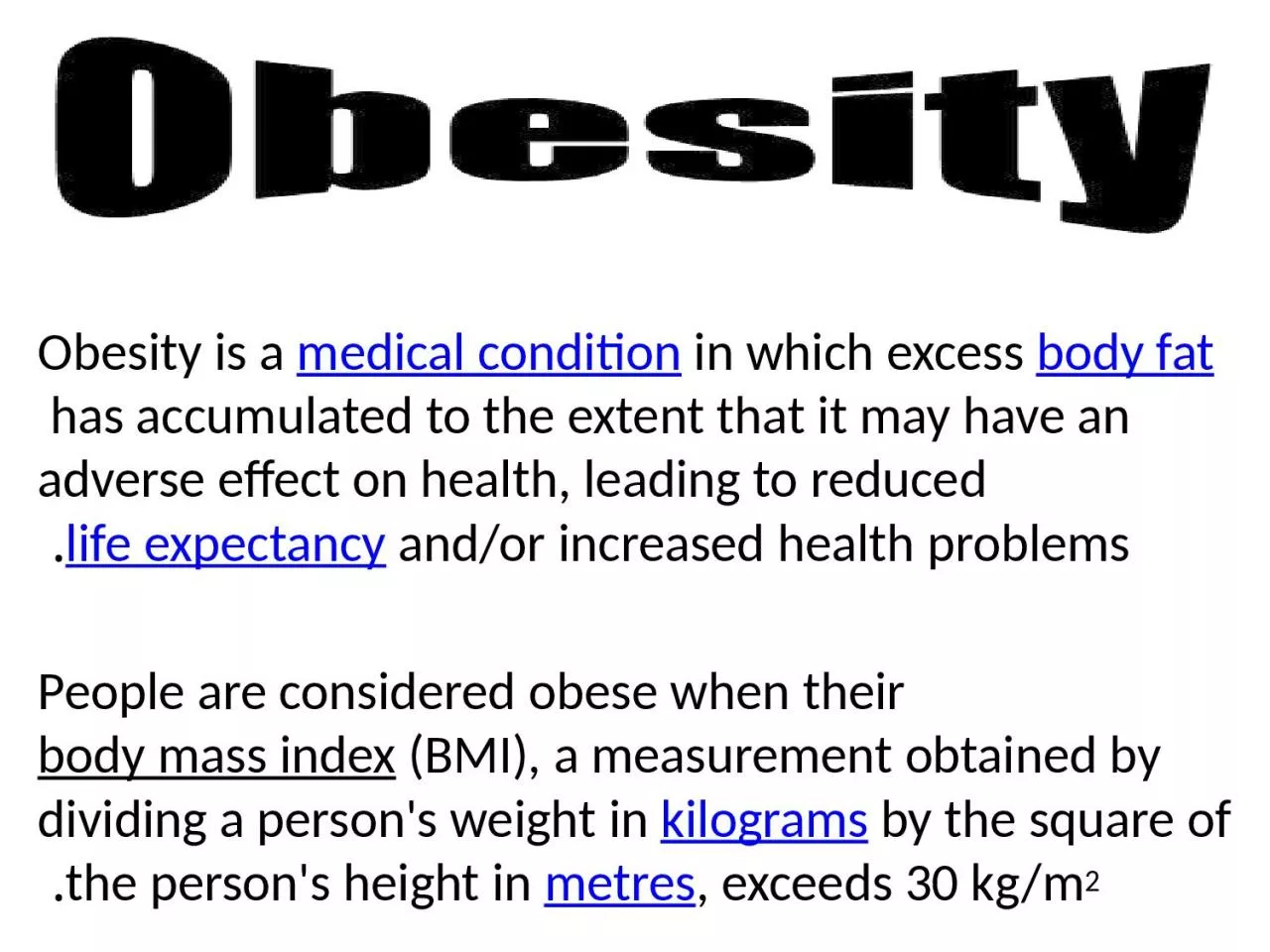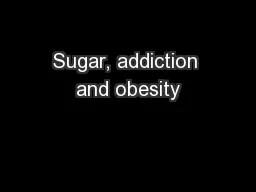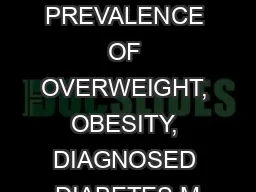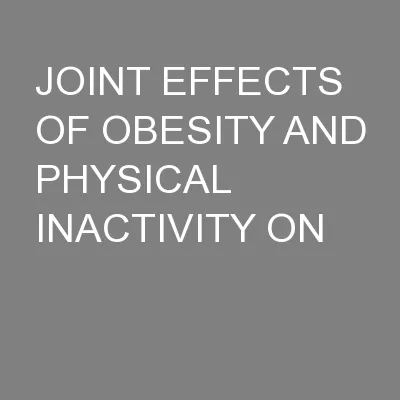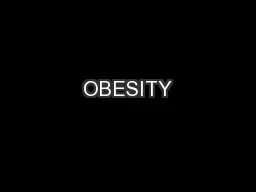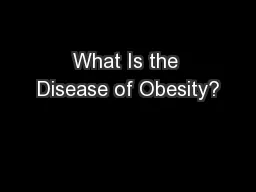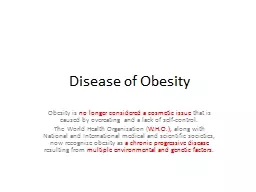PPT-Obesity is a medical condition
Author : amey | Published Date : 2022-06-15
in which excess body fat has accumulated to the extent that it may have an adverse effect on health leading to reduced life expectancy andor increased
Presentation Embed Code
Download Presentation
Download Presentation The PPT/PDF document "Obesity is a medical condition" is the property of its rightful owner. Permission is granted to download and print the materials on this website for personal, non-commercial use only, and to display it on your personal computer provided you do not modify the materials and that you retain all copyright notices contained in the materials. By downloading content from our website, you accept the terms of this agreement.
Obesity is a medical condition: Transcript
Download Rules Of Document
"Obesity is a medical condition"The content belongs to its owner. You may download and print it for personal use, without modification, and keep all copyright notices. By downloading, you agree to these terms.
Related Documents

